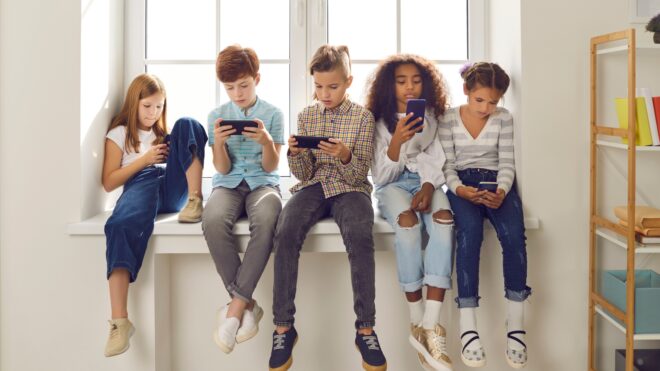
As parents, most of us know that we need to talk to our kids about bullying. Those conversations might include discussions of what to do if our kids see someone being bullied or who to ask for help if they are the target of a bully. But a lot of us might be missing out on having another essential conversation: How to help our kids recognize if they're the one doing the bullying and how to stop.
Even though we'd all like to believe that our kids would never be a bully, the truth is that child relationships can be complicated. Kids might not realize when they've crossed the line into becoming a bully, especially when social media gets involved. We reached out to an expert to talk about the signs of bullying and how to help prevent our own children from becoming bullies.
More from CafeMom: Mom Says Football Players Put Peanuts in Teen's Locker, Purposely Causing Allergy Attack
Be Clear on the Difference Between Bullying and Peer Conflict.

Kids are human and being human means that we don't always like everyone. Sometimes we get into disagreements with friends. Some people we just don't want to hang out with. For parents whose kid is having conflict with another child, it can be helpful to first be clear on what actually constitutes bullying.
Amy S., a school counselor and licensed professional clinical counselor based in Minnesota, explains to CafeMom that the "difference between bullying and students just not getting along has to do with whether or not it’s repeated. In addition, there is typically an actual or perceived imbalance of power." She advises that parents look for "repeated unwanted behavior that is intimidating, threatening, abusive or harming conduct" that "is repeated or forms a pattern."
To put it in kid terms: It's normal to sometimes disagree with someone or get mad, but when it happens frequently or involves hurting the other person (physically or with words or actions), that's when bullying starts.
Help Kids Understand That Bullying Isn't Just Physical.
Depending on the age of a kid, they may understand that physically hurting someone can be bullying, but they might need to also understand that bullying can happen in other ways as well.
Amy S. notes that she sees social media as one of the places where both friendship conflict and bullying behavior can show up, even in younger kids. She explains: "I would say that actual bullying is less common than people might think and that what we actually see is more peer conflict and friendship issues. These behaviors have certainly increased in the last several years in the wake of the pandemic and with the increase in social media that students have access to.
"We have hundreds of thousands of children who missed really formative years in regards to socialization and communication during the pandemic, and as a society we have been so busy trying to catch up and move forward that we have missed a huge opportunity to think about how we communicate and connect with each other," she continues.
"Is there bullying? Absolutely. Are there students and children who struggle with connection and communication and friendship? Yes. … I think it’s all just amplified because you can just type something or take a photo and post it and it doesn’t feel as permanent. I think our students also need to learn more about their permanent digital footprints," she tells CafeMom.
Parents Need To Be Role Models.
Our kids get their first glimpse about how to interact with people from watching us.
"I also think that children mimic what they see, so watch your own behavior and language as an adult," Amy S. tells us. "How are you showing kindness on a daily basis? What kind of example are you being for your children when you notice bullying behavior in society? How are you standing up for marginalized populations?"
Being Curious Is a Way To Prevent Bullying Behavior.
A parent's ability to recognize if their kid is being a bully and then to help their child change how they interact with other kids starts with having curiosity.
"Have a conversation, get curious, build a communication network and group of parents who can all work together to support kids. Parenting is a team sport, so the more you can work together as a community and a family to make sure your child is connected and understands the importance of kindness the better. … "Get to know their friends, check their social media, and meet your child’s friends' parents," the school counselor advises.
Find Resources To Support Kids Who Need Help.
Parents who discover or suspect their kid has been bullying need to first make it clear that intentionally causing repeated harm to another person is never OK. But more than that, they need to help their child better understand why they were bullying and what they were getting out of those interactions.
Some children may need some additional support, and a school counselor might be a good first step in the right direction. Amy S. encourages concerned parents to "partner with your children’s school, we are here to help and the more we can collaborate the better."
More from CafeMom: My Son Drew a Picture So Disturbing His Teacher Had To Call an Emergency Meeting With Us




